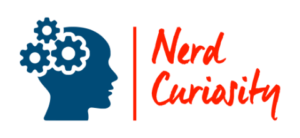Exploring the multifaceted role of product managers, one may wonder whether testing falls within their broad spectrum of responsibilities. After all, the success of a product hinges on its value and quality, aspects deeply influenced by thorough testing processes. A product manager’s commitment to achieving the set goals for their product often necessitates a deep dive into data and empirical evidence.

Yes, product managers do engage in testing; it’s integral to their role. They leverage testing to ensure quality, validate assumptions, and make data-driven decisions that enhance product value.
As you read on, you’ll gain insights into how product managers utilize various testing methodologies to align product development with customer needs and business objectives. You’ll also learn how testing informs strategy refinement and helps product managers to steer their products confidently towards market success.
Role of Product Managers in Testing

When entering the realm of product development, your understanding of a product manager’s role in testing is fundamental to achieving product success. These professionals bridge the gap between what customers desire and the technical solutions provided by development teams.
Understanding Product Testing
Product testing is a crucial phase in the product lifecycle that ensures the final outcome aligns with both user requirements and strategic goals. As a product manager, you’re trusted to identify what constitutes success for a product. You engage with quality assurance (QA) experts and the wider software development team to establish testing parameters that reflect customer needs accurately.
It’s through your meticulous approach to this phase that potential defects are smeared out before they can impact the user experience. Your ability to blend stakeholder expectations with practical software solutions substantially raises the odds of your product meeting its goals.
Product Manager vs. Product Owner in Testing
Diving into roles, while you, the product manager, focus largely on the product’s strategic direction, the product owner tends to have a more tactical role. The product owner dives into the day-to-day collaboration with the development team, converting your strategy into actionable tasks. This often includes refining requirements and verifying that each product increment meets them.
In contrast, your keen eye for the broader product vision allows you to prioritize features based on what will drive the most value. You ensure that the testing process not only measures product quality but also gauges its capacity to fulfill strategic goals and solve real user problems, thereby articulating the true measure of success.
Types of Testing in Product Management

In product management, your success hinges on understanding and executing various types of testing. These tests not only enhance the user experience but also ensure that the design and functionality of your product meet user expectations.
A/B Testing and User Behavior
A/B testing is a powerful tool you possess to gauge customer responses to product variations. Through this method, you can present two different versions of your product to users in a controlled manner, enabling you to make data-driven enhancements. Insights from A/B testing often lead to improvements in both user experience and design.
Acceptance and Usability Testing
Acceptance testing, a critical phase of testing, requires your attention to ensure the product conforms to business requirements. Usability testing focuses on the product’s ease-of-use. Here, real users test the product in realistic scenarios, and their feedback is pivotal in refining user experience.
Automated, Unit, and Integration Testing
Automated testing enables you to run tests efficiently without manual intervention. Unit testing assesses individual components for proper operation, whereas integration testing checks the interoperability between these components. Embracing these methods fortifies the reliability of your product and accelerates the development process.
Incorporating Testing Into Product Strategy

Product testing is more than just a box to check; it’s a core part of your product strategy that aligns with your mission for quality and risk mitigation.
Balancing Quality and Speed
Your role in product management often requires a delicate balance between rigor and speed. To maintain quality, it is necessary that you define what metrics will measure success. Whether these are conversion rates, user engagement stats, or load times, the data garnered from these metrics provides insights that drive future development. You must be vigilant about not sacrificing quality for speed, ensuring that your strategies include iterative testing phases that can adapt to data findings quickly.
Testing as a Means of Risk Management
Consider testing an integral part of your risk management approach. By framing each test as a hypothesis, your efforts to gather data and generate insights become proactive steps in validating your assumptions rather than reactive scrambles to fix post-launch issues. Testing helps you to engage with stakeholders effectively, providing hard evidence that can influence decision-making and pivot directions when necessary. Use the results from your testing to either reinforce your strategy or to raise flags when the risk is detected, ultimately safeguarding the project’s success and relevance in the market.
Product Managers and Test Planning

As a product manager, diving into test planning is integral for delivering a product that meets quality standards. By crafting a thorough test plan, allocating the right resources, and setting clear metrics, you lay the groundwork for product success.
Creating a Test Plan
You begin by defining the scope of testing, ensuring every feature and function is accounted for in your test plan. This document is your roadmap, highlighting what to test and when. Your test plan should include detailed test scenarios and cases—you’re creating a blueprint for how testing will unfold.
Resource Allocation for Testing
Testing isn’t free, so it’s critical to balance resources such as time, personnel, and your budget wisely. Allocate roles to team members based on their expertise, and ensure you have all the necessary tools at your disposal. Your insight into resource allocation makes the difference between a well-supported test phase and one that’s under-resourced.
Setting Metrics for Testing Success
How will you measure the success of your testing? That’s where metrics come in. Identify key performance indicators that align with your product goals. These might include defect rates, test coverage, or user satisfaction in a testing scenario. By setting robust metrics, you empower your team with clear targets and guide your product to a successful launch.
Leveraging Testing for Market Success
In a competitive market landscape, your ability to successfully leverage testing can solidify your product’s position and ensure it meets customer expectations.

Understanding Market and Customer Needs
To resonate with your audience, you must deeply understand their needs and preferences. This involves gathering and analyzing data to inform your product’s development. Effective market testing can provide valuable insights, guiding you to create features and improvements that align with customer desires. Conducting surveys and using tools like LinkedIn’s market testing advice can establish a solid foundation for your product’s success.
Performance Testing and Market Relevance
Ensuring that your product performs reliably under various conditions is crucial. In this stage, you map product capabilities to market demands to confirm relevance. Techniques such as A/B testing and scenario simulations help fine-tune your offerings. For deeper insights into this, refer to resources like Sauce Labs, which emphasize the significance of thorough testing before release.
Testing and Competitive Analysis
Analyzing your competitors is key to carving out your niche in the market. You should evaluate their strengths and weaknesses through systematic testing of their products. This can involve feature comparisons, usability studies, and market segmentation. By doing so, you pave the way for strategic decisions that propel your product ahead. Resources like ProductPlan emphasize how testing can inform your competitive strategy.
Conclusion

You’ve seen the pivotal role testing plays for product managers in ensuring that every aspect of a product meets high standards of quality and user satisfaction. Testing isn’t just about checking boxes; it involves a deep engagement with product features, user expectations, and market demands. By integrating various testing methods, you gain invaluable insights into user behavior and preferences.
Through practices such as A/B testing, you can make data-driven decisions to enhance user engagement. Remember, testing is more than a behind-the-scenes activity; it’s an indispensable part of your product’s journey to the marketplace. Adopting techniques like fake door testing can even help validate interest before committing resources to develop new features.
It’s crucial that you view testing as a continuous, iterative process. Your commitment to testing shapes the excellence of your product. While some believe testing is confined to the final stages of development, it’s beneficial to integrate testing throughout the product lifecycle. This proactive approach to testing will enable you to deliver a more polished, user-centered product. Embrace the scientific and collaborative aspects of testing—as they are core to your success as a product manager.
Your knowledge of testing should grow with experience. Let it evolve as you discover new ways to capture and understand user feedback, which is, after all, the guiding light for any product’s development. This informed approach is not just a good practice; it is essential in the dynamic and often unpredictable world of product management.
